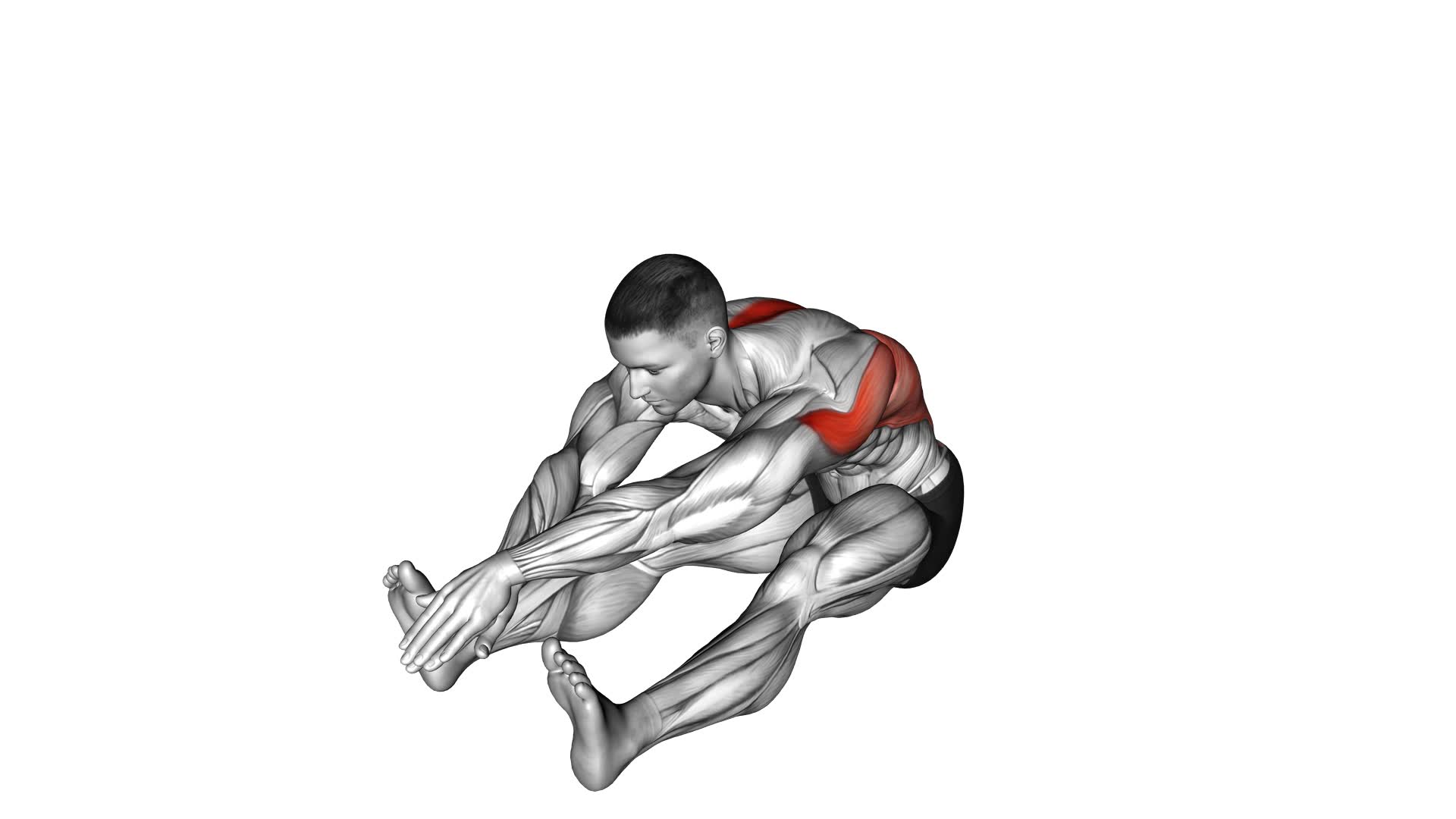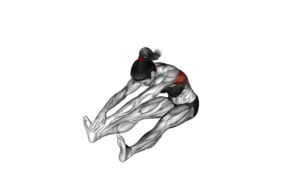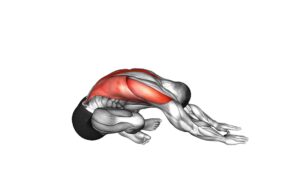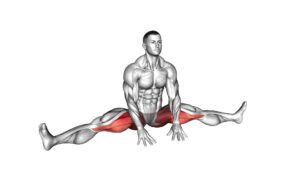Sitting Bent Over Back Stretch – Video Exercise Guide & Tips

Are you looking to improve your flexibility and relieve tension in your back? Look no further than the Sitting Bent Over Back Stretch! This exercise is designed to target your lower back and help improve your overall posture.
Watch This Exercise Video
In this article, we will guide you through the proper technique, common mistakes to avoid, modifications and variations, as well as tips for getting the most out of this stretch.
Get ready to feel the benefits and take your flexibility to new heights!
Key Takeaways
- The sitting bent over back stretch improves flexibility in the spine and relieves tension in the lower back.
- Engaging the core muscles during the stretch is important for maintaining proper alignment and preventing back pain.
- Modifications and variations of the stretch, such as the seated twist and supported backbend, can provide additional benefits and options for different individuals.
- It is crucial to pay attention to proper form, hold the stretch for at least 30 seconds, and gradually increase intensity over time to avoid muscle strain.
Benefits of the Sitting Bent Over Back Stretch
To experience the full benefits of the Sitting Bent Over Back Stretch, make sure to maintain proper form and engage your core muscles throughout the exercise. This stretch is highly effective in improving flexibility and relieving lower back pain.
By performing the Sitting Bent Over Back Stretch regularly, you can increase the range of motion in your spine and enhance overall flexibility. When you bend forward at the hips and reach towards your toes, you stretch the muscles in your lower back, hamstrings, and glutes. This helps to lengthen and loosen these muscles, allowing for greater mobility and ease of movement.
Additionally, this stretch can provide relief for individuals suffering from lower back pain. The Sitting Bent Over Back Stretch helps to decompress the spine and relieve tension in the muscles that support it. By stretching and lengthening these muscles, you can alleviate discomfort and promote proper alignment of the spine.
To ensure that you're getting the most out of this stretch, remember to engage your core muscles throughout the exercise. This will help to stabilize your back and protect it from excessive strain. By maintaining proper form and engaging your core, you can maximize the benefits of the Sitting Bent Over Back Stretch and promote a healthy, flexible spine.
Proper Technique for the Sitting Bent Over Back Stretch
To perform the Sitting Bent Over Back Stretch with proper technique, position yourself on a flat surface with your legs extended in front of you. Sit up tall, ensuring your spine is straight and your shoulders are relaxed. Take a deep breath in, and as you exhale, slowly begin to hinge forward from your hips. Keep your back straight as you fold forward, reaching your hands towards your toes. It's important to note that you should only go as far as feels comfortable for your body.
As you hold the stretch, you'll feel a gentle stretch in your lower back and hamstrings. This stretch helps to improve flexibility in the spine and increase blood flow to the area. It can also help to relieve tension and tightness in the back muscles.
If you find it difficult to reach your toes, you can modify the stretch by using a yoga strap or towel. Simply wrap the strap or towel around the soles of your feet and hold onto the ends, allowing your hands to slide closer towards your feet. This modification will help you to achieve a deeper stretch without straining your back or hamstrings.
Remember to listen to your body and never push yourself beyond your limits. With regular practice, the Sitting Bent Over Back Stretch can help improve your overall flexibility and promote a healthy back.
Common Mistakes to Avoid During the Sitting Bent Over Back Stretch
When performing the sitting bent over back stretch, it's important to be mindful of your posture. One common mistake to avoid is slouching or rounding your back, as this can put unnecessary strain on your spine.
Additionally, it's crucial to engage your core muscles throughout the exercise to provide stability and support for your back.
Improper Posture Risks
To avoid the risks of improper posture during the sitting bent over back stretch, make sure you maintain proper alignment and engage your core muscles. Improper posture can lead to a variety of issues that can negatively impact your overall health and well-being.
Here are three consequences of bad posture that you should be aware of:
- Increased risk of back pain: Poor posture puts unnecessary strain on your spine and muscles, leading to discomfort and pain in the back.
- Reduced flexibility and range of motion: Incorrect alignment can limit your ability to move freely, making it harder to perform daily activities and exercises.
- Digestive issues: Slouching compresses your abdominal organs, hindering proper digestion and potentially causing problems such as acid reflux or constipation.
Lack of Core Engagement
To avoid a lack of core engagement during the sitting bent over back stretch, focus on activating your abdominal muscles throughout the exercise. Core engagement is crucial for maintaining stability and preventing injury during any exercise routine.
When performing the sitting bent over back stretch, it's important to understand the role of the core muscles in supporting your spine and maintaining proper alignment. By actively engaging your abdominal muscles, you can improve your core stability and enhance the effectiveness of the stretch.
To activate your core, imagine pulling your belly button towards your spine, while maintaining a relaxed breath. This will help you maintain proper form and alignment, while also strengthening your core muscles.
Incorporating core strengthening exercises into your routine can further enhance your core stability and overall fitness level. Remember, a strong core is the foundation for a strong and healthy body.
Modifications and Variations for the Sitting Bent Over Back Stretch
To modify or vary the sitting bent over back stretch, you can try different techniques. Here are three variations that can help you customize this stretch to meet your needs:
- Seated Twist: Begin in a seated position with your legs extended in front of you. Cross one leg over the other, placing the foot flat on the floor. Rotate your torso towards the crossed leg, placing your opposite elbow on the outside of the knee. Gently twist to deepen the stretch in your back. Hold for 30 seconds on each side.
- Supported Backbend: Sit on a stability ball with your feet flat on the ground. Walk your feet forward as you lean back and rest your upper back on the ball. Place your hands on the back of your head for support. This variation provides additional support and allows for a deeper backbend stretch.
- One-Legged Forward Fold: Sit on the edge of a chair or bench with one leg extended straight in front of you and the other foot flat on the floor. Hinge forward at the hips, reaching towards your extended leg. Keep your back straight and engage your core. Hold for 30 seconds on each side.
Tips for Getting the Most Out of the Sitting Bent Over Back Stretch
To get the most out of the sitting bent over back stretch, it's important to focus on proper form techniques. Make sure to sit up tall with a straight back before bending forward from the hips.
Additionally, it's recommended to hold the stretch for at least 15 to 30 seconds to allow the muscles to fully relax and lengthen.
Proper Form Techniques
To get the most out of the sitting bent over back stretch, ensure that your form is correct and maintain a proper position throughout the exercise. Here are some tips to help you achieve proper form and maximize the benefits of this stretch:
- Engage in proper warm up exercises before performing the sitting bent over back stretch. This will help prepare your muscles and prevent injury.
- Pay attention to your breathing during the stretch. Improper breathing can limit the effectiveness of the exercise. Take deep breaths in and out as you hold the stretch.
- Keep your back straight and your shoulders relaxed. Avoid rounding your back or hunching your shoulders to maintain proper alignment.
By following these form techniques, you'll optimize the benefits of the sitting bent over back stretch.
Now, let's move on to discussing the recommended duration for this stretch.
Stretching Duration Recommendations
To maximize the benefits of the sitting bent over back stretch, aim to hold the stretch for at least 30 seconds. This duration allows your muscles and connective tissues to gradually lengthen and improve flexibility. Holding the stretch for this amount of time also ensures that you're effectively targeting the muscles in your back and promoting proper alignment.
Research has shown that longer stretching durations, such as 60 seconds or more, may offer even greater benefits in terms of improving muscle elasticity and preventing injury. However, if you're just starting out or have any existing injuries or conditions, it's important to consult with a healthcare professional before increasing the duration of your stretches.
Now, let's move on to the precautions and considerations for the sitting bent over back stretch.
Precautions and Considerations for the Sitting Bent Over Back Stretch
Take caution when performing the Sitting Bent Over Back Stretch to ensure proper form and prevent injury. Here are some precautions and considerations to keep in mind:
- Warm up: Before attempting any stretching exercise, it's important to warm up your muscles. This can be done through light cardio exercises such as jogging or jumping jacks. Warming up will increase blood flow to your muscles and make them more pliable, reducing the risk of injury.
- Listen to your body: Pay close attention to how your body feels during the stretch. If you experience any sharp or intense pain, stop immediately. Stretching shouldn't cause pain, but rather a gentle pulling sensation. If you feel any discomfort, adjust the stretch or try an alternative exercise.
- Gradually increase intensity: Start with a gentle stretch and gradually increase the intensity over time. Pushing too hard or too quickly can strain your muscles and lead to injury. Take it slow and give your body time to adapt to the stretch.
Frequently Asked Questions
How Often Should I Perform the Sitting Bent Over Back Stretch?
To get the most out of the sitting bent over back stretch, it's important to consider how often you should perform it.
The frequency of this stretch depends on your fitness goals and individual needs. For optimal results, aim to do this stretch at least 2-3 times a week.
However, if you're recovering from an injury or have specific back issues, consult with a healthcare professional for personalized recommendations.
Remember to always listen to your body and modify the stretch as needed.
Can the Sitting Bent Over Back Stretch Help Relieve Lower Back Pain?
Yes, incorporating the sitting bent over back stretch into your daily routine can help relieve lower back pain.
By stretching the muscles in your lower back, this exercise can help increase flexibility and reduce tension.
To perform the stretch correctly, sit with your legs extended in front of you and slowly bend forward from your hips, reaching towards your toes.
Remember to keep your back straight and avoid rounding your shoulders.
Regularly incorporating this stretch can provide significant benefits for relieving lower back pain.
Is It Normal to Feel Discomfort During the Sitting Bent Over Back Stretch?
Feeling discomfort during the sitting bent over back stretch isn't uncommon. It's important to maintain proper form to minimize this discomfort. Make sure to sit up straight, engage your core, and slowly bend forward from the hips. Avoid rounding your back or straining your neck.
Start with a gentle stretch and gradually increase the intensity over time. If the discomfort persists or worsens, it's advisable to consult a healthcare professional for guidance.
Can the Sitting Bent Over Back Stretch Improve Posture?
Improving your posture is one of the key benefits of incorporating the sitting bent over back stretch into your daily routine. This exercise helps to elongate the spine and stretch the muscles in your back, which can help to counteract the effects of prolonged sitting or poor posture.
To ensure proper form and technique, remember to sit tall with a straight back, hinge from your hips, and avoid rounding your shoulders. Focus on deep breaths and relax into the stretch for maximum benefit.
Are There Any Alternative Stretches That Target the Same Muscle Groups as the Sitting Bent Over Back Stretch?
If you're looking for alternative stretches that target the same muscle groups as the sitting bent over back stretch, there are a few effective back stretches you can try.
These include the cat-cow stretch, the child's pose, and the seated twist stretch.
These stretches can help improve flexibility in your back, relieve tension, and promote better posture.
Incorporating these alternatives into your routine can provide variety and help you achieve your fitness goals.
Conclusion
In conclusion, the sitting bent over back stretch is a beneficial exercise for improving flexibility and relieving tension in the back muscles. By following the proper technique and avoiding common mistakes, you can maximize the effectiveness of this stretch.
Additionally, there are modifications and variations available to suit different fitness levels and needs. Remember to always listen to your body and take precautions to avoid any potential injuries.
Incorporating the sitting bent over back stretch into your routine can help promote a healthy and strong back.

Author
Years ago, the spark of my life’s passion ignited in my mind the moment I stepped into the local gym for the first time. The inaugural bead of perspiration, the initial endeavor, the very first surge of endorphins, and a sense of pride that washed over me post-workout marked the beginning of my deep-seated interest in strength sports, fitness, and sports nutrition. This very curiosity blossomed rapidly into a profound fascination, propelling me to earn a Master’s degree in Physical Education from the Academy of Physical Education in Krakow, followed by a Sports Manager diploma from the Jagiellonian University. My journey of growth led me to gain more specialized qualifications, such as being a certified personal trainer with a focus on sports dietetics, a lifeguard, and an instructor for wellness and corrective gymnastics. Theoretical knowledge paired seamlessly with practical experience, reinforcing my belief that the transformation of individuals under my guidance was also a reflection of my personal growth. This belief holds true even today. Each day, I strive to push the boundaries and explore new realms. These realms gently elevate me to greater heights. The unique combination of passion for my field and the continuous quest for growth fuels my drive to break new ground.



